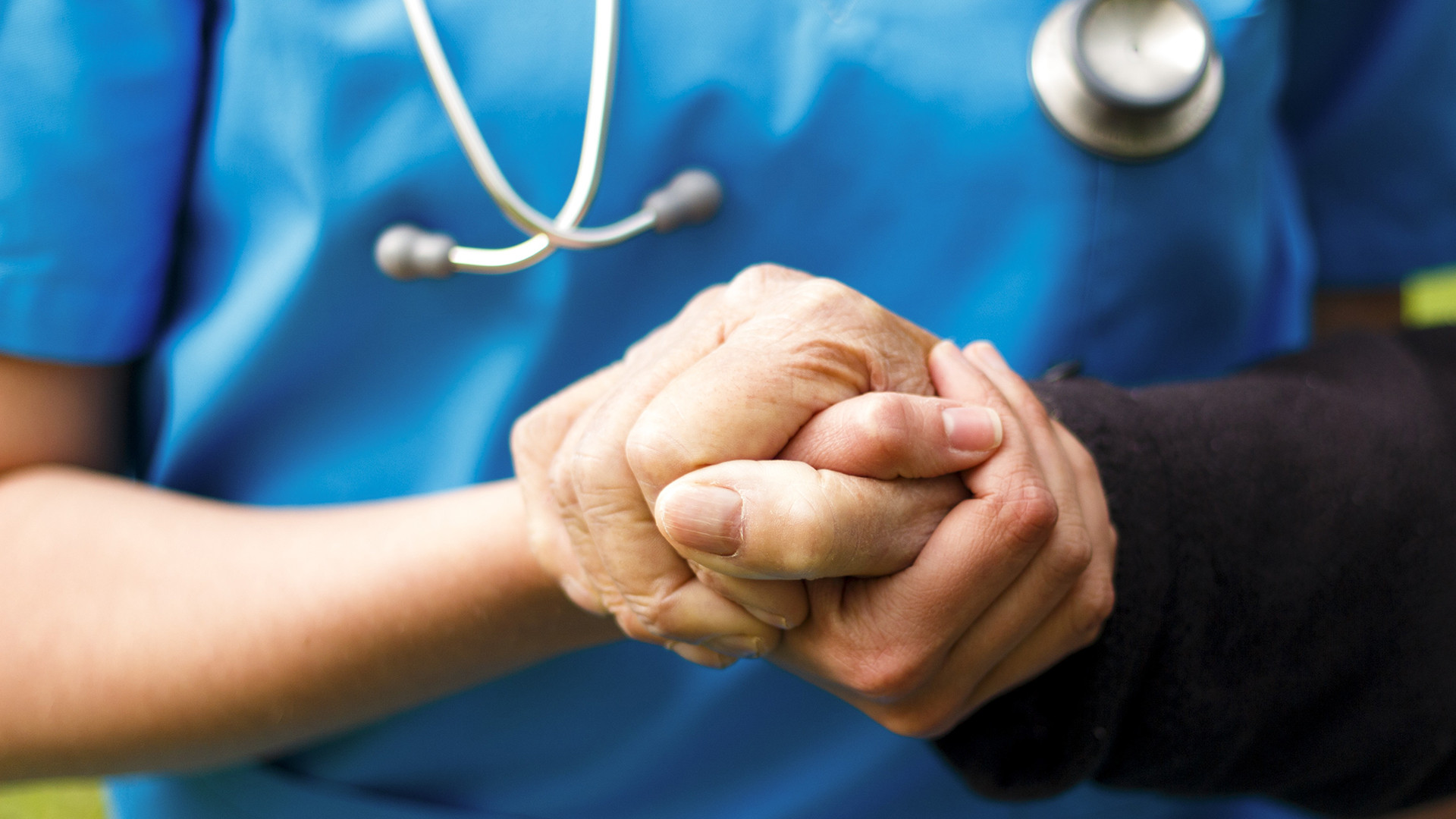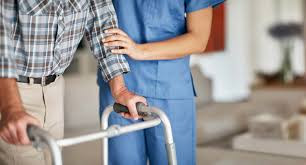Definition
Parkinson's disease is a progressive nervous system disorder that affects movement. Symptoms worsen gradually, sometimes starting with a barely noticeable tremor in one hand. Besides tremors, Parkinson's disease also causes stiffness or slowing of movement.
In the early stages of the disease, the patient's face may show little or no expression. The patient's arms may not swing when walking, and their voice may become soft or unclear.
Although Parkinson's disease cannot be cured, medications can significantly improve symptoms. Sometimes, doctors suggest surgery to regulate certain brain areas and alleviate symptoms.
Causes
In Parkinson's disease, certain brain nerve cells (neurons) gradually break down or die. Symptoms are caused by the loss of neurons that produce dopamine, a chemical messenger that transmits signals in the brain. When dopamine levels decrease, abnormal brain activity results, resulting in impaired movement and other symptoms of Parkinson's disease.
The exact cause of Parkinson's disease is unknown, but several factors may contribute, including:
- Genetic factors: Researchers have identified specific genetic mutations that can cause Parkinson's disease. This is rare unless many family members are affected. However, certain gene variations may increase the risk of Parkinson's disease, though the risk is relatively small.
- Environmental factors: Exposure to certain toxins or environmental factors may increase the risk of Parkinson's disease later in life, but the risk is relatively small.
Risk factor
Risk factors for Parkinson's disease include:
- Age: Young adults rarely experience Parkinson's disease. It typically begins in middle or late life, with the risk increasing with age. Most people develop the disease around age 60 or older.
- Heredity: Having a close relative with Parkinson's disease increases the risk of developing the disease. However, the risk is still small unless many family members have Parkinson's disease.
- Gender: Men are more likely to develop Parkinson's disease than women.
- Toxin exposure: Prolonged exposure to herbicides and pesticides may slightly increase the risk of Parkinson's disease.
Symptoms
The signs and symptoms of Parkinson's disease can vary from person to person. Early signs may be mild and go unnoticed. Symptoms often begin on one side of the body and usually worsen on that side, even after symptoms begin to affect both sides. Signs and symptoms of Parkinson's disease may include:
- Tremor: Tremor or shaking, often beginning in a hand or fingers. It may occur at rest and can involve a back-and-forth rubbing of the thumb and forefinger, known as a pill-rolling tremor.
- Slowed movement (bradykinesia): Over time, Parkinson's disease may slow movement, making simple tasks difficult and time-consuming. Steps may become shorter, and walking may involve dragging feet.
- Muscle stiffness: Muscle stiffness can occur in any part of the body and can be painful, limiting the range of motion.
- Impaired posture and balance: Posture may become stooped, or balance problems may occur.
- Loss of automatic movements: Reduced ability to perform unconscious movements, such as blinking, smiling, or swinging arms while walking.
- Speech changes: Speech may become soft, quick, slurred, or hesitant before talking. Speech may be more monotone.
- Writing changes: Writing may become difficult, and handwriting may appear small.
Diagnosis
There is no specific test for diagnosing Parkinson's disease. Neurologists diagnose Parkinson's disease based on medical history, signs, and symptoms, and a physical and neurological examination. Additional tests, such as DaTscan (dopamine transporter scan), may be recommended to confirm the diagnosis. However, neurological examination and symptoms are the primary methods for diagnosis. Laboratory tests such as blood tests may be performed to rule out other conditions. Imaging tests like MRI, brain ultrasound, and PET scans may also be used to exclude other disorders but are not particularly helpful in diagnosing Parkinson's disease.
Management
While Parkinson's disease cannot be cured, medications can help control symptoms. In some severe cases, surgery may be necessary. Doctors may also recommend lifestyle changes, such as aerobic exercise. Physical therapy focusing on balance and stretching is also important. Speech-language pathologists can help with speech difficulties.
Medications can help manage walking, movement, and tremors by increasing or substituting dopamine levels in the brain. Surgical procedures, such as deep brain stimulation (DBS), involve implanting electrodes in specific brain regions. These electrodes connect to a generator implanted in the chest, sending electrical pulses to the brain to reduce symptoms.
DBS is often recommended for patients with unstable responses to levodopa. While DBS can stabilize medication effects and reduce dyskinesia, it does not prevent disease progression.
Lifestyle Changes
If diagnosed with Parkinson's, consult with your doctor to develop the best treatment plan with the fewest side effects. Certain lifestyle changes can make living with Parkinson's easier, such as:
- Healthy Eating: A high-fiber diet and adequate fluid intake can help prevent constipation common in Parkinson's disease. A balanced diet provides nutrients, such as omega-3 fatty acids, beneficial for those with Parkinson's.
- Exercise: Regular exercise can improve muscle strength, flexibility, and balance, and reduce depression or anxiety. Consult a physical therapist for a suitable exercise program. Activities like walking, swimming, gardening, dancing, aerobics, or stretching may help.
- Preventing Falls: Advanced Parkinson's disease may increase the risk of falls. Strategies to prevent falls include turning in a wide arc instead of pivoting on your feet, distributing weight evenly between both feet, avoiding carrying items while walking, and not walking backward.
Daily activities like dressing, eating, bathing, and writing can become challenging. Occupational therapists can teach techniques to make daily life easier. Supportive therapies may help alleviate symptoms and complications of Parkinson's, such as pain, fatigue, and depression, and improve quality of life.
Complications
Parkinson's disease is often accompanied by various complications, including:
- Cognitive difficulties: Cognitive issues (dementia) and difficulty thinking may occur in later stages.
- Depression and emotional changes: Depression and other emotional changes such as fear, anxiety, or loss of motivation can occur. Medications may help manage these symptoms.
- Swallowing problems: As the disease progresses, swallowing difficulties may develop, causing saliva buildup in the mouth.
- Chewing and eating problems: Late-stage Parkinson's can affect mouth muscles, leading to difficulty chewing and potential choking.
- Sleep disorders: Patients may experience sleep problems such as frequent waking, waking early, or daytime sleepiness.
- Bladder problems: Bladder issues, such as inability to control urine or difficulty urinating, may occur.
- Constipation: Constipation is common due to slower digestive processes.
Additional symptoms may include:
- Blood pressure changes: Sudden drops in blood pressure upon standing (orthostatic hypotension) may cause dizziness.
- Smell dysfunction: Difficulty identifying certain odors or differentiating between odors.
- Fatigue: Many patients experience fatigue, whose cause is often unknown.
- Pain: Some patients experience localized or body-wide pain.
- Sexual dysfunction: Reduced sexual desire or performance.
Prevention
The exact cause of Parkinson's is unknown, so effective prevention methods remain elusive. However, some research suggests that regular aerobic exercise may reduce the risk. Other studies indicate that green tea consumption may lower the risk of Parkinson's disease.
For those with Parkinson's, certain measures may slow disease progression:
- Regular exercise, especially aerobic exercise
- Strength training
- Balance training
- Functional activity training
When to see a doctor?
See a doctor if you experience any symptoms of Parkinson's disease. Consultation is important not only for diagnosis but also to rule out other causes of your symptoms.
Looking for more information about other diseases? Click here!
- dr Ayu Munawaroh, MKK
Parkinson’s disease. (2020). Retrieved 30 November 2021, from https://www.mayoclinic.org/diseases-conditions/parkinsons-disease/symptoms-causes/syc-20376055
Hauser RA. (2020). Parkinson disease. Retrieved 5 Desember 2021, from https://emedicine.medscape.com/article/1831191-overview
Larson J. (2021). Is it possible to prevent Parkinson’s disease?. Retrieved 5 Desember 2021, from https://www.healthline.com/health/parkinsons/how-to-prevent-parkinsons
Parkinson’s disease. (2019). Retrieved 5 Desember 2021, from https://www.nhs.uk/conditions/parkinsons-disease/
Parkinson’s disease. (2017). Retrieved 5 Desember 2021, from https://www.nia.nih.gov/health/parkinsons-disease
Elkouzi A. (2021). What is Parkinson’s?. Retrieved 5 Desember 2021, from https://www.parkinson.org/understanding-parkinsons/what-is-parkinsons












